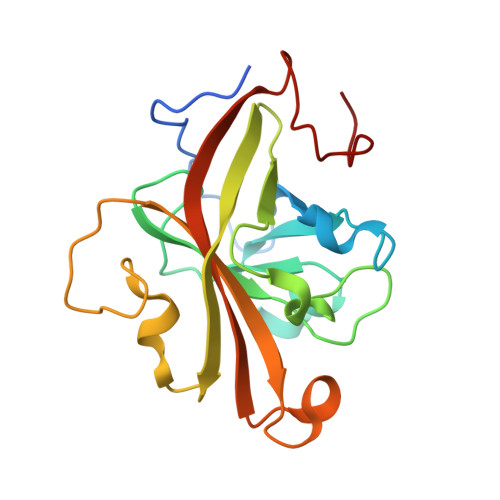Cell-to-cell interaction requires optimal positioning of a pilus tip adhesin modulated by gram-positive transpeptidase enzymes.
Chang, C., Wu, C., Osipiuk, J., Siegel, S.D., Zhu, S., Liu, X., Joachimiak, A., Clubb, R.T., Das, A., Ton-That, H.(2019) Proc Natl Acad Sci U S A 116: 18041-18049
- PubMed: 31427528
- DOI: https://doi.org/10.1073/pnas.1907733116
- Primary Citation of Related Structures:
5UTT - PubMed Abstract:
Assembly of pili on the gram-positive bacterial cell wall involves 2 conserved transpeptidase enzymes named sortases: One for polymerization of pilin subunits and another for anchoring pili to peptidoglycan. How this machine controls pilus length and whether pilus length is critical for cell-to-cell interactions remain unknown. We report here in Actinomyces oris , a key colonizer in the development of oral biofilms, that genetic disruption of its housekeeping sortase SrtA generates exceedingly long pili, catalyzed by its pilus-specific sortase SrtC2 that possesses both pilus polymerization and cell wall anchoring functions. Remarkably, the srtA- deficient mutant fails to mediate interspecies interactions, or coaggregation, even though the coaggregation factor CafA is present at the pilus tip. Increasing ectopic expression of srtA in the mutant progressively shortens pilus length and restores coaggregation accordingly, while elevated levels of shaft pilins and SrtC2 produce long pili and block coaggregation by SrtA + bacteria. With structural studies, we uncovered 2 key structural elements in SrtA that partake in recognition of pilin substrates and regulate pilus length by inducing the capture and transfer of pilus polymers to the cell wall. Evidently, coaggregation requires proper positioning of the tip adhesin CafA via modulation of pilus length by the housekeeping sortase SrtA.
Organizational Affiliation:
Division of Oral Biology and Medicine, School of Dentistry, University of California, Los Angeles, CA 90095; jchang@dentistry.ucla.edu htonthat@dentistry.ucla.edu.















